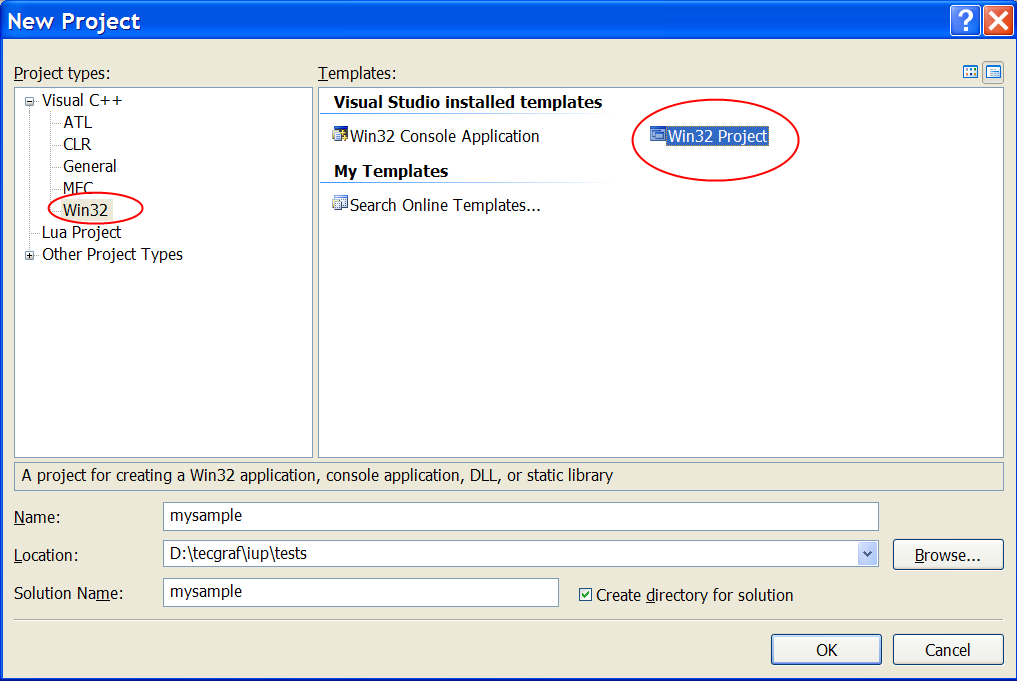
- #Visual studio win32 application wizard how to#
- #Visual studio win32 application wizard install#
- #Visual studio win32 application wizard code#
- #Visual studio win32 application wizard download#
WinMain is equivalent to an entry function and has a fixed grammar: Just as every C/C++ console application must have a main function at its starting point, every Win32-based application must also have a WinMain function. To meet our needs, add the following references (the first two are required): Our application needs to use many existing definitions to accomplish the required functionality. In the Name box, type a file name, such as GT_HelloWorldWin32.cpp. In the Add New Items dialog box, select "C++ File (.cpp)". HelloApp project, then click Add and New Items in turn. Under Additional Options, select Empty Item.

Under Application Type on the Application Settings page, select Windows Applications. On the welcome page of Win32 Application Wizard, click Next. In the Name box, type a project name, such as HelloApp. In the middle pane, select Win32 Project. In the left pane of the New Project dialog box, click Installed Template and Visual C++, and then select Win32. On the file menu, click New, and then click Project.Ģ.
#Visual studio win32 application wizard code#
Next, let's step by step introduce the general framework where the code is involved, and the complete code will be given at the end of the article.
#Visual studio win32 application wizard how to#
Getting to the point, this article discusses how to use Visual Studio to generate the simplest C form application and display Hello to the user~ If you're just starting out, this article must be very suitable for you. Here I will record the learning process from a zero-based perspective. Recently, I just started to learn C/C++ to develop Windows applications. Unfortunately the OWLNext Wizard assumes that its files are located below "Program Files", so in this case you have to change the installation location to the latter.How to create the simplest Windows desktop application (C++)

In 64-bit editions of Windows, the installer will suggest "Program Files (x86)" as the installation location. The Wizard assumes that the suggested location is not changed.
#Visual studio win32 application wizard install#
Note: If you install the OWLNext Wizard on a 32-bit edition of Windows, then do not change the installation location suggested by the installer. This plug-in adds the "OWLNext Wizard" to the project templates in the "New project" dialog.
#Visual studio win32 application wizard download#
You can also download and install the OWLNext Application Wizard for Visual Studio. See this article for more information.įor a walkthrough on how to configure a Visual C++ project to build an OWLNext application with different settings, read the Configuring Visual C++ 2005/2008 OWLNext Projects article. Then you are trying to build a Unicode application, and you will have to either change the application to Single Byte or MBCS, or change the entry point to "wWinMainCRTStartup". "LNK2019: unresolved external symbol referenced in function _tmainCRTStartup" For more information, see Configuring Visual C++ 2005/2008 OWLNext Projects. In this case you have to define "_OWLDLL" in "Preprocessor Definitions" in the project options to tell OWLNext to use dynamic linking also. The default for new projects is dynamic linking of the standard libraries. In the second page of the Win32 Application Wizard, check "Empty project": This will make OWLNext include and library directories available for all Visual C++ projects.Ĭreate a new Visual C++ Win32 application project:

Select "Library files" and add "$(owlroot)\lib": In the "Show directories for:" combo-box select "Include files" and add "$(owlroot)\include": From the menu "Tools | Options" open the Options dialog, and go to the "Projects and Solution | VC++ Directories" section. If you plan to work often on OWLNext applications, it is convenient to add OWLNext include and library directories to the global Visual Studio settings. See also: Setting up environment variables under Windows 2000/XP.

An advantage of using this environment variable is that projects are easily transferred from one computer to another without having to modify the project files. For building OWLNext applications I recommend to set the environment variable OWLROOT to point to the root folder where OWLNext files are installed.


 0 kommentar(er)
0 kommentar(er)
